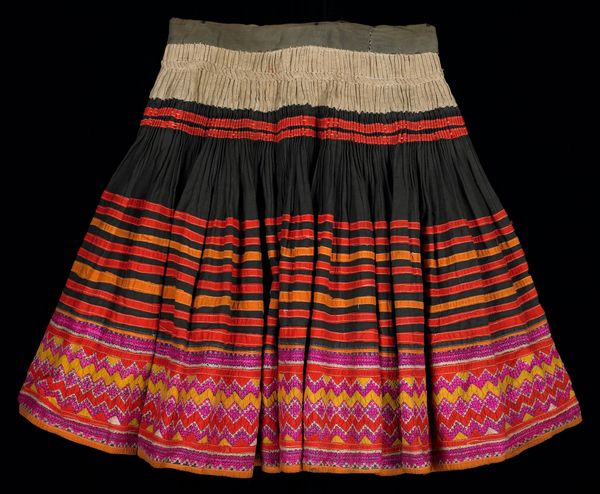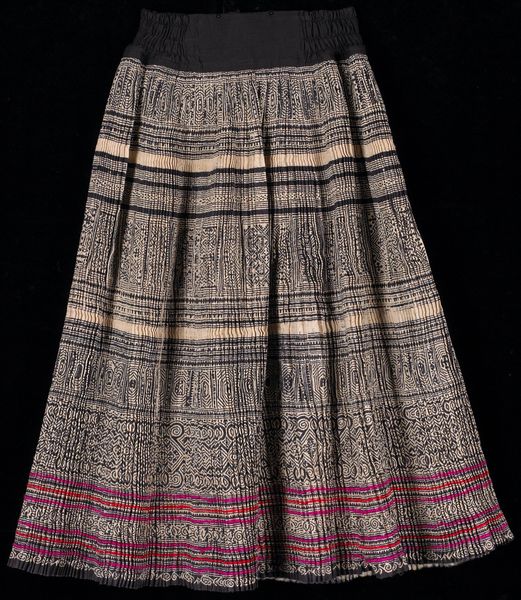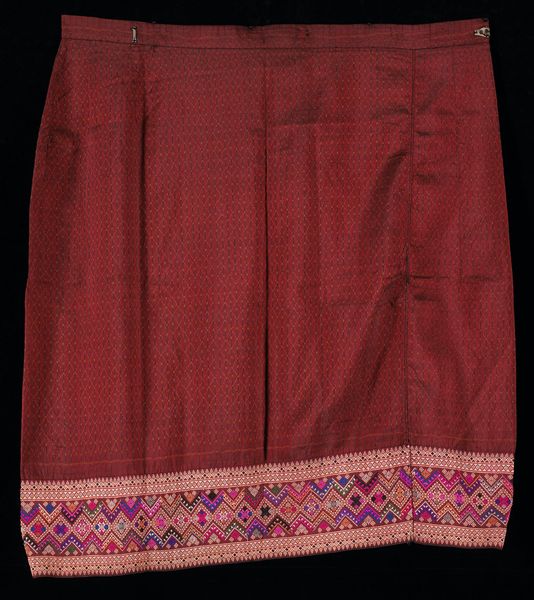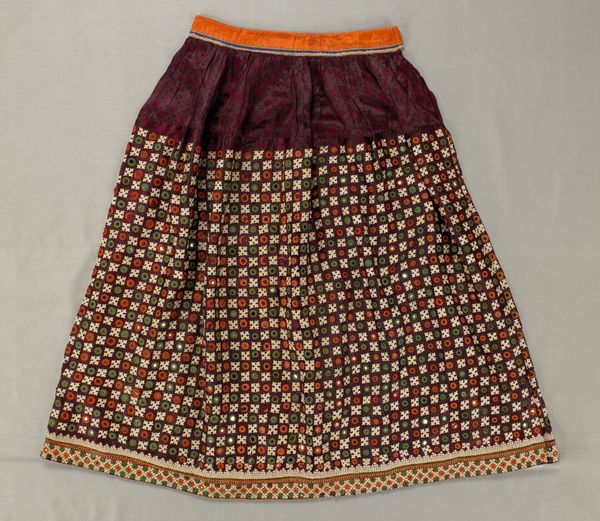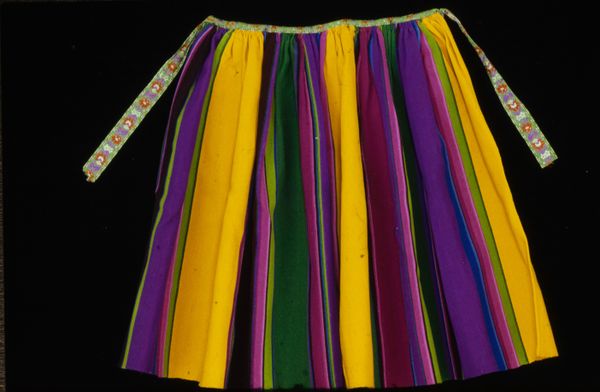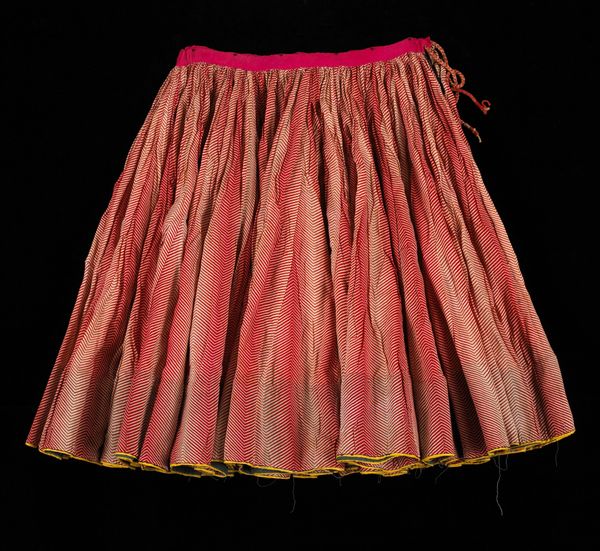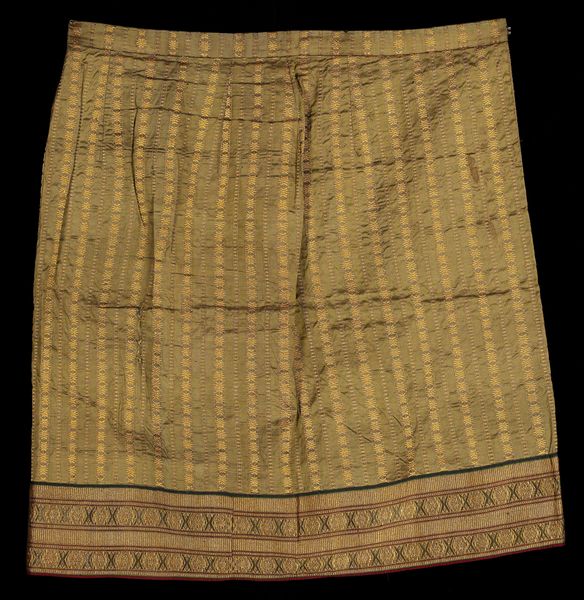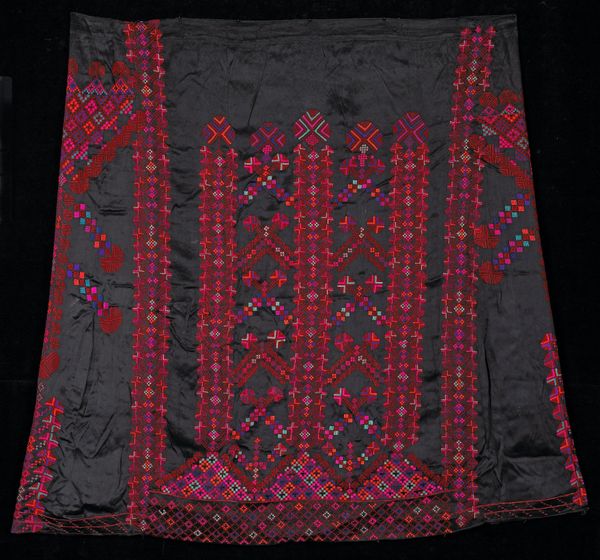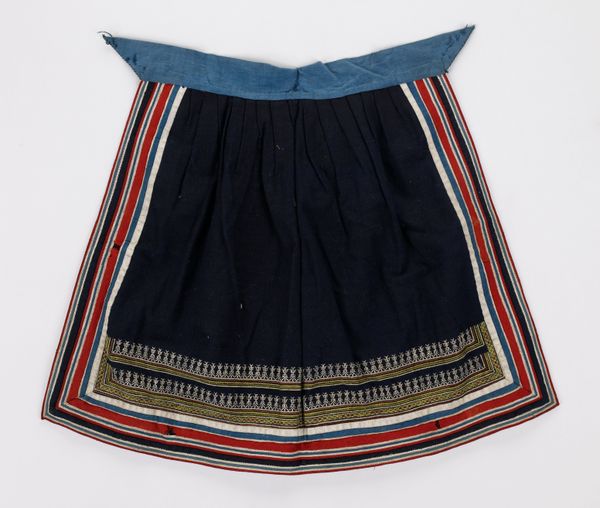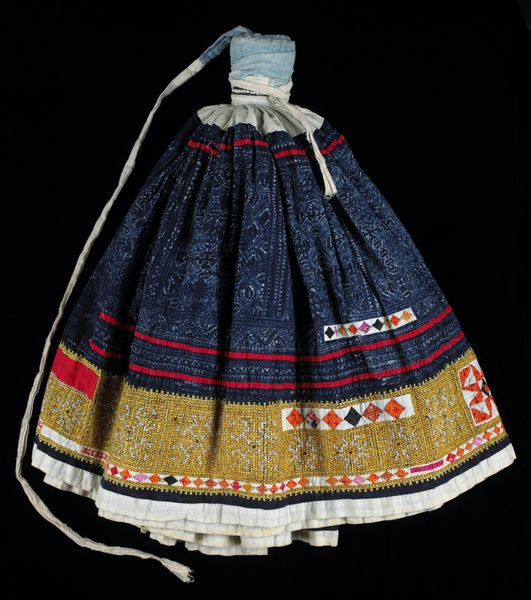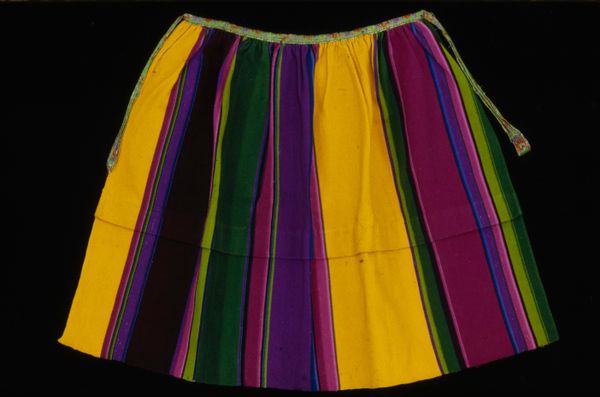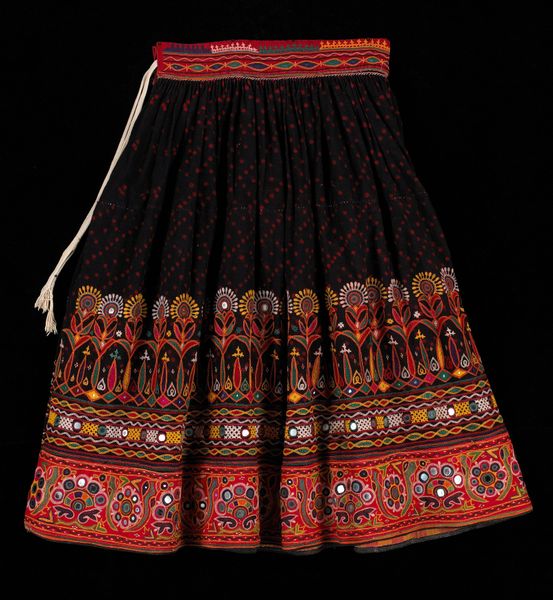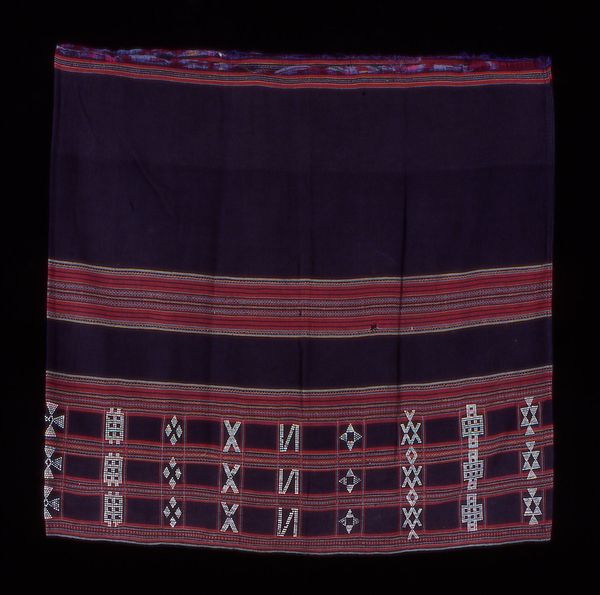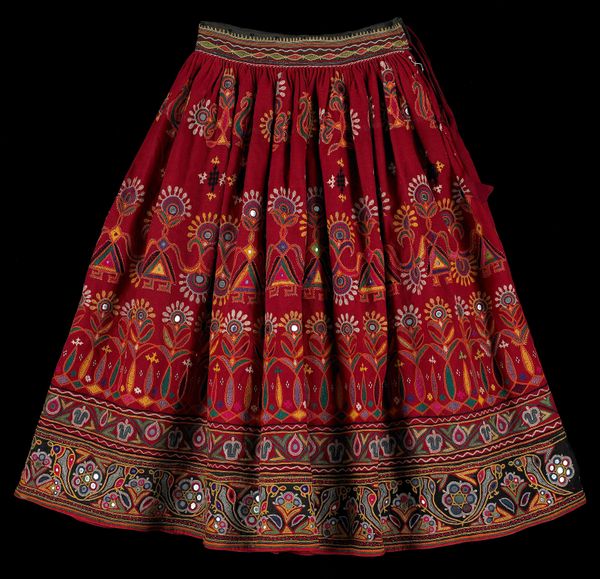
fibre-art, textile
#
tribal design
#
fibre-art
#
textile
#
fashion and textile design
#
hand-embroidered
#
pattern design
#
folk-art
#
geometric
#
repetition of pattern
#
pattern repetition
#
textile design
#
decorative-art
#
imprinted textile
#
layered pattern
#
combined pattern
Dimensions: 30 1/2 x 24 3/4 in. (77.47 x 62.87 cm) (length at waistband, without ties)
Copyright: Public Domain
Editor: Here we have a "Ceremonial Skirt" created sometime between 1950 and 1982 by a Blue Hmong artist. It's made using a variety of materials - cotton, silk, and other mixed media. It's currently housed here at the Minneapolis Institute of Art. The skirt's combination of vibrant colors and intricate geometric patterns give it such a festive energy. What stories do you think it tells? Curator: I see layers, not just of fabric, but of meaning. Each band of color, each repeated motif acts as a visual mnemonic, a coded language passed down through generations. Notice the precision of the hand-embroidered details. They are not merely decorative. Editor: How so? Curator: Think of these geometric forms not as abstract designs, but as stylized representations of the world - mountains, rivers, ancestral figures. The Hmong people, displaced and adapting for centuries, encode their history, beliefs, and social structure into these textiles. The skirt then becomes a portable archive. Editor: So, the symbols offer a connection to cultural identity, even through periods of migration and change? Curator: Precisely. This is cultural memory made visible. Each stitch is a testament to resilience, a reaffirmation of belonging. The vibrant colours, consider those too, a bold statement of identity in a world that often seeks to erase difference. Editor: I never would have thought of reading a skirt. It is a wonderful story! Curator: These aren’t just patterns, are portals. We learn by observing their careful geometry that it visually connects the present to the past, but offers a template of meaning for future generations to come.
